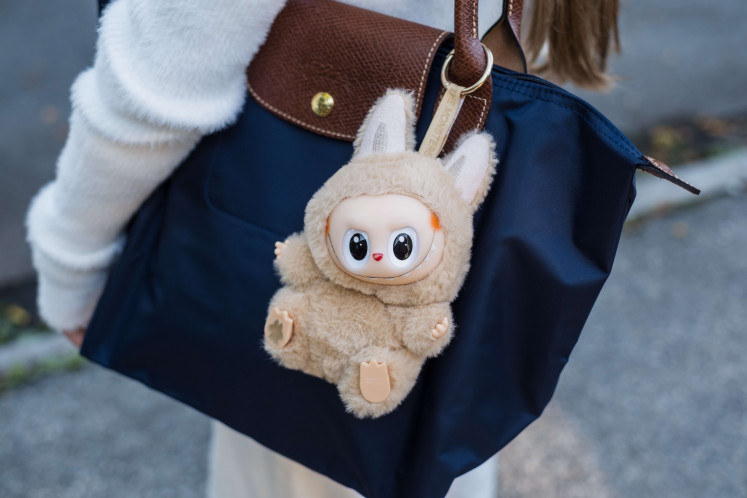Popular Reads
Top Results
Can't find what you're looking for?
View all search resultsPopular Reads
Top Results
Can't find what you're looking for?
View all search resultsThe many dishes of Sekaten celebrated in Surakarta
The annual Sekaten came with special dishes that were sold during the weeklong celebration.
Change text size
Gift Premium Articles
to Anyone
Sekaten is an annual celebration held to commemorate the birth of the Prophet Muhammad.
It has been a tradition since the era of the Demak Kingdom (1475 to 1554), which was the origin of both the Yogyakarta Sultanate and the Kasunanan Surakarta Palace.
In Yogyakarta, the celebration is held by the Yogyakarta Sultan, while in Central Java’s Surakarta, it is organized by the Kasunanan Surakarta Palace.
This year's Sekaten in Surakarta was held from Nov. 2 to 9. The opening ceremony was marked by two sets of sacred gamelan, called Kiai Guntur Madu and Kiai Guntur Sari, located at the Surakarta Grand Mosque. They were played non-stop until the end of the celebration, the Grebeg Maulud.
The weeklong celebration was also marked by the special dishes of Surakarta, as listed below.
Kinang
Kinang comprises a set of dried sliced tobacco leaves, betel leaves, gambier, injet (lime) and kanthil flowers. There is a particular order one needs to follow to enjoy the dish. The first is to put the gambier and lime on a piece of betel leaf, fold the leaf and chew it. The sliced tobacco leaf is then inserted between the gum and lip, while the kanthil flowers, initially used to give aroma to the tobacco, can also be chewed or slipped above the ear or in hair buns.
This dish is popular among elderly women. Many come from outside Surakarta just to enjoy kinang while listening to the sound of gamelan music during Sekaten.
There is a myth that says whoever chews kinang during the Sekaten celebration would be blessed with youth. The dish is also said to contain the philosophy of courage and determination, as one who is willing to taste the bitter kinang is prepared to take life as it is.
Read also: Some things remain, others disappear from Sekaten celebration
Nasi Liwet and Cabuk Rambak
These two dishes are usually served together. Nasi liwet is rice cooked in coconut milk with bay leaves and other spices, served with side dishes comprising sliced chayote cooked in coconut milk with red chili, chicken meat, eggs and small boiled chilies.
Cabuk rambak contains sliced ketupat (rice wrapped in palm leaves) served with sambal cabuk and rice crackers. The high note lies on the flavor-rich sambal cabuk, which is made of sesame and grated coconut spiced with candlenuts, galangals, cayenne peppers, palm oil and sliced lime leaves.
Endog Kamal
Endog Kamal (salted duck egg) is usually consumed as a side dish to nasi liwet.
Buying endog kamal as Sekaten souvenirs for relatives has also been a tradition for generations. As implied in its name, amal (alms) symbolizes a message for people to do good deeds.
Ronde and Asle
These two traditional beverages are often sold together and are suitable for dessert, thanks to their sweet taste.
Ronde was inspired by a traditional Chinese beverage originally named tangyuan. It comprises small balls of sticky rice cake, roasted peanuts and sugar palm fruits served with a ginger drink.
Asle is made of coconut milk cooked with sugarcane, served with sliced bread, jelly, sugar palm fruits and boiled peanuts. Asle can be served hot or cold with ice cubes.
Dodol
Dodol, also known as jenang dodol in Central Java, is a chewy cake made of sticky rice powder, coconut milk and coconut sugar.
Dodol sold during the Sekaten celebration come from various regions around Surakarta, such as Central Java’s Demak and Kudus, as well as Kulonprogo in Yogyakarta. They come in a variety of flavors, but are mostly sweet. (yun/wng)











